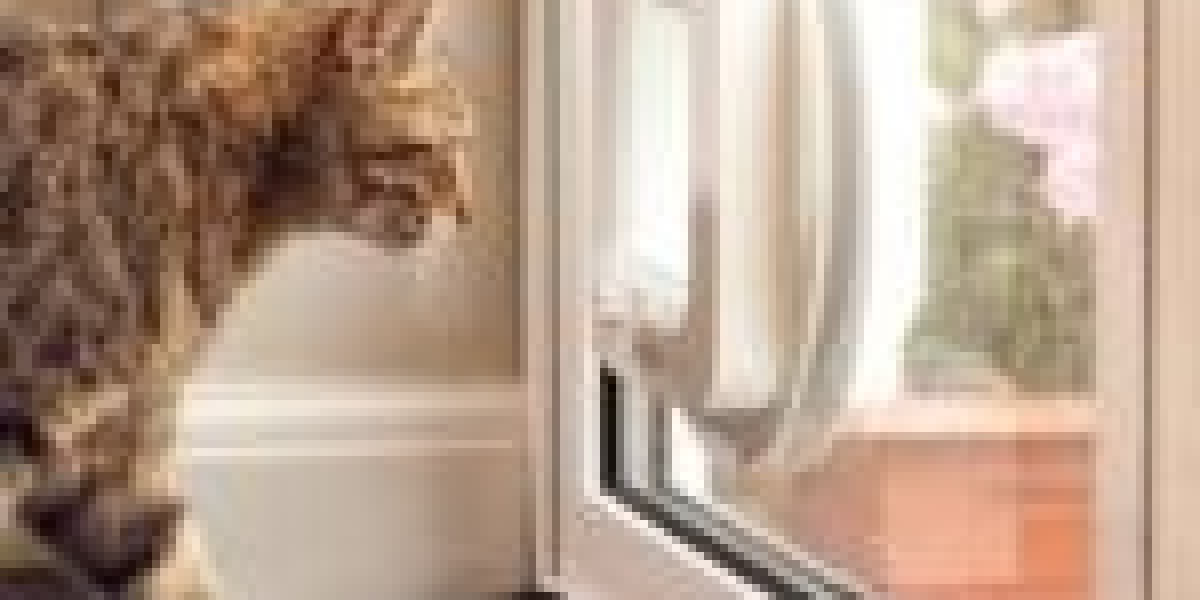Keeping the Purrfect Passage Open: A Guide to Cat Door Maintenance
Cat doors, likewise known as pet doors or cat flaps, are a fantastic addition to any home with feline buddies. They use felines the liberty to check out the outdoors (or designated areas within your home) and relieve themselves, all while offering owners comfort and decreasing the variety of unscripted door-opening demands. Nevertheless, like any other feature of a house, cat doors are not immune to wear and tear. Regular maintenance is vital to guarantee they continue to work properly, remain safe and secure, and offer a comfortable and safe passage for your beloved cat. Overlooking maintenance can cause a host of problems, ranging from a stiff and loud flap to a total breakdown, potentially locking your cat out or, even worse, jeopardizing your home's security.

This short article will delve into the significance of cat door maintenance, detailing the essential actions to keep your pet's access point in prime condition. By comprehending the easy maintenance needed, you can extend the life-span of your cat door, guarantee your cat's ongoing freedom, and prevent expensive repairs or replacements down the line.
Why Regular Cat Door Maintenance Matters
Preserving your cat door is more than simply a cosmetic job; it's an investment in the functionality, security, and durability of the feature, in addition to the comfort and well-being of your cat. Here are some key reasons that regular maintenance is important:
- Ensures Smooth Operation: Dust, debris, and weather condition elements can accumulate around the hinges and flap of a cat door, triggering it to end up being stiff, sticky, or noisy when opening and closing. Routine cleaning and lubrication avoid these problems, guaranteeing the door runs efficiently and silently, motivating your cat to utilize it without doubt.
- Extends the Lifespan of the Door: Like any mechanical element, cat doors are subject to use and tear. Disregarding maintenance can accelerate this process, leading to premature damage and the need for replacement. Regular cleansing, lubrication, and attending to small issues quickly can considerably extend the lifespan of your cat door, conserving you money in the long run.
- Maintains Security: A properly functioning cat entry door installation door should close safely after your cat travels through. Damaged or improperly preserved doors might not close totally, potentially compromising your home's security by leaving gaps that might be made use of by intruders or permit drafts and pests to go into. For electronic or microchip-operated doors, consistent maintenance guarantees the locking systems and sensors work reliably, keeping controlled access.
- Prevents Drafts and Energy Loss: An inadequately kept cat door can become a considerable source of drafts, particularly in colder environments. Gaps around the flap or frame due to damage or particles can let cold air in and warm air out, increasing your energy bills. Appropriate sealing and weather condition stripping maintenance is important to keep energy effectiveness.
- Promotes Hygiene: Cat doors are exposed to the aspects and can collect dirt, mud, and even insect invasions in time. Routine cleaning assists preserve a hygienic passage for your cat and avoids the transfer of dirt and germs into your home.
- Lowers Noise: An overlooked cat door can become loud, especially in windy conditions. Squeaking hinges or a rattling flap can be disruptive to both you and your cat. Lubrication and tightening up of loose components can considerably minimize sound levels.
- Early Detection of Problems: Routine maintenance allows you to check your cat door carefully and identify any possible problems early on, such as fractures, loose screws, or malfunctioning parts. Attending to these small problems quickly can prevent them from escalating into more significant and pricey repairs.
Types of Cat Doors and Maintenance Considerations
While the basic maintenance principles apply throughout most cat doors, various types may have specific requirements. Here's a quick overview of common cat door types and maintenance considerations:
- Basic Flap Doors: These are the simplest and most typical type. Maintenance mainly involves cleaning the flap and frame, lubricating hinges, and examining for damage to the flap product (plastic, rubber, or versatile polymer).
- Magnetic Cat Doors: These doors utilize a magnetic collar secret to permit entry just to cats wearing the key. Maintenance consists of the exact same jobs as standard flap doors, plus guaranteeing the magnetic system is clean and without particles. Also, check the collar secret's magnet is still functional.
- Microchip Cat Doors: These doors utilize a microchip scanner to recognize your cat's implanted microchip, providing selective entry. Maintenance consists of cleaning, looking for damage, and occasionally replacing batteries if it is battery-powered. The scanner lens ought to be kept clean for reputable chip detection.
- Electronic Cat Doors: These doors might use infrared or radio frequency (RFID) innovation for selective entry, often with innovative features like curfew settings. Maintenance includes cleansing, examining for damage, battery replacement (if relevant), and periodically recalibrating or reprogramming the electronic components according to the maker's guidelines.
Vital Cat Door Maintenance Tasks: A Step-by-Step Guide
Establishing a routine maintenance schedule will keep your cat door working efficiently. Here's a breakdown of typical maintenance jobs:
1. Regular Cleaning (Weekly/Bi-weekly):
- Gather Supplies: You will require:
- Mild soap or detergent
- Warm water
- Soft fabric or sponge
- Paper towels or a clean, dry cloth
- (Optional) Disinfectant wipes (pet-safe)
- Wipe Down the Flap: Use a moist fabric or sponge with soapy water to clean both sides of the flap. Get rid of any dirt, mud, fur, or insect residue.
- Tidy the Frame: Clean the whole frame of the cat door, both inside and out. Take note of corners and crevices where dirt can build up.
- Dry Thoroughly: Ensure all parts are totally dry to avoid mildew or rust.
- Sanitize (Optional): If wanted, use pet-safe disinfectant wipes to sterilize the door and frame, particularly if you have numerous cats or desire to keep extra hygiene.
2. Lubrication (Monthly/As Needed):
- Identify Hinges and Moving Parts: Locate the hinges, pivots, or any other moving parts of the cat door mechanism.
- Apply Lubricant: Use a silicone-based lube spray or a dry lubricant (like graphite powder) particularly designed for hinges and moving parts. Prevent oil-based lubes, as they can bring in dust and become sticky over time. Apply sparingly to avoid drips.
- Work the Door: Open and close the residential cat door installation door flap numerous times to disperse the lubricant equally and ensure smooth, peaceful operation. Wipe away any excess lubricant.
3. Evaluation and Repair (Monthly/Seasonally):
- Check for Damage: Carefully inspect the flap for fractures, tears, or warping. Try to find damage to the frame, weather condition stripping, or any locking systems.
- Tighten Loose Screws: Check all screws protecting the door frame to the door or wall and tighten up any that are loose. Loose screws can result in instability and drafts.
- Check Weather Stripping: Examine the weather condition stripping around the flap and frame for damage, cracks, or gaps. Change harmed weather removing to maintain an excellent seal and prevent drafts.
- Battery Check (Electronic/Microchip Doors): If your door is battery-operated, examine the battery level frequently and replace batteries according to the maker's recommendations. Low batteries can cause malfunctions and unreliable operation.
- Sensing Unit Cleaning (Microchip/Electronic Doors): Gently clean the sensing unit lens with a soft, dry cloth to guarantee precise chip or key detection.
4. Seasonal Maintenance:
- Winter:
- Check for ice buildup around the flap and frame. Carefully remove ice to prevent damage and make sure smooth operation.
- Guarantee weather condition stripping remains in good condition to prevent drafts and cold air entry.
- Summer season:
- Check for insect nests or infestations around the cat door. Clean away any nests and think about utilizing pet-safe bug spray around the door frame.
- Make sure correct ventilation around the door opening to avoid humidity buildup and prospective mildew growth.
Tools and Supplies for Cat Door Maintenance
Keeping a small package of maintenance tools and materials useful will make regular maintenance easier and more effective. Think about putting together the following:
- Soft fabrics and sponges
- Mild soap or cleaning agent
- Silicone lube spray or dry lubricant
- Screwdriver (Phillips and flathead)
- Pet-safe disinfectant wipes (optional)
- Replacement weather removing (if needed)
- Small brush for cleaning up crevices
- Paper towels
- Replacement batteries (if relevant)
DIY vs. Professional Help
Many routine cat door maintenance jobs are straightforward and can be quickly handled by house owners. However, there are scenarios where looking for professional assistance might be recommended:
- Significant Damage: If you find comprehensive damage to the door frame, flap, or locking mechanisms, professional repair or replacement may be necessary.
- Electronic Malfunctions: Troubleshooting electronic or microchip door breakdowns can be complicated. If you are uncertain how to diagnose or repair electronic problems, speak with a professional installer or a qualified technician.
- Installation Issues: If you are experiencing relentless problems after setting up a brand-new cat door, it might be due to installation mistakes. A professional installer can assess the situation and correct any issues.
Routine cat door maintenance is a basic yet important element of accountable pet ownership for those who pick to offer their feline friends with this flexibility. By dedicating a percentage of time to cleaning, lubricating, and examining your cat door, you can ensure its continued smooth operation, longevity, security, and hygiene. A well-maintained cat door offers your cat with consistent access to the outside world (or designated indoor areas), adding to their happiness and wellness, while likewise supplying comfort for you. Taking proactive actions to take care of your cat door will keep the purrfect passage open for years to come.
Frequently Asked Questions about Cat Door Maintenance
Q: How typically should I clean my 24/7 cat flap installer (Repairmywindowsanddoors official) door?
A: Aim to clean your cat door weekly or bi-weekly for basic flap doors. For electronic or microchip doors that may build up more dirt around the sensing unit areas, weekly cleansing is suggested.
Q: What type of lube should I utilize on my cat door hinges?
A: Silicone-based lube spray or dry lube (like graphite powder) is recommended. Prevent oil-based lubes as they can attract dust and become sticky.
Q: How do I clean a microchip cat door sensor?
A: Use a soft, dry fabric to carefully clean the sensing unit lens. Avoid utilizing liquids or abrasive cleaners, as they could damage the sensing unit.
Q: My insured cat flap installation door flap is sticking. What should I do?
A: First, clean the flap and frame thoroughly. Then, use a percentage of lubricant to the hinges and moving parts. If the sticking persists, inspect for any damage to the flap or frame and consider tightening screws or changing the door alignment.
Q: How do I know when to replace the batteries in my electronic cat door?
A: Electronic cat doors generally have a low battery indicator light or caution signal. Refer to your door's handbook for specific instructions on battery replacement. It's a great practice to replace batteries proactively, perhaps every 6-12 months depending upon use and battery type.
Q: Can I utilize household cleaners to clean my cat door?
A: Yes, you can utilize moderate soap or detergent diluted in warm water. Prevent extreme chemicals or abrasive cleaners that could damage the door material. Ensure any cleaning items are pet-safe.
Q: My cat door is letting in drafts. How can I repair this?
A: Inspect the weather condition stripping around the flap and frame. Replace any damaged or worn weather condition removing. Make sure the door frame is firmly installed and tighten up any loose screws. You can also think about including extra weather condition stripping or a draft excluder particularly developed for pet doors.








